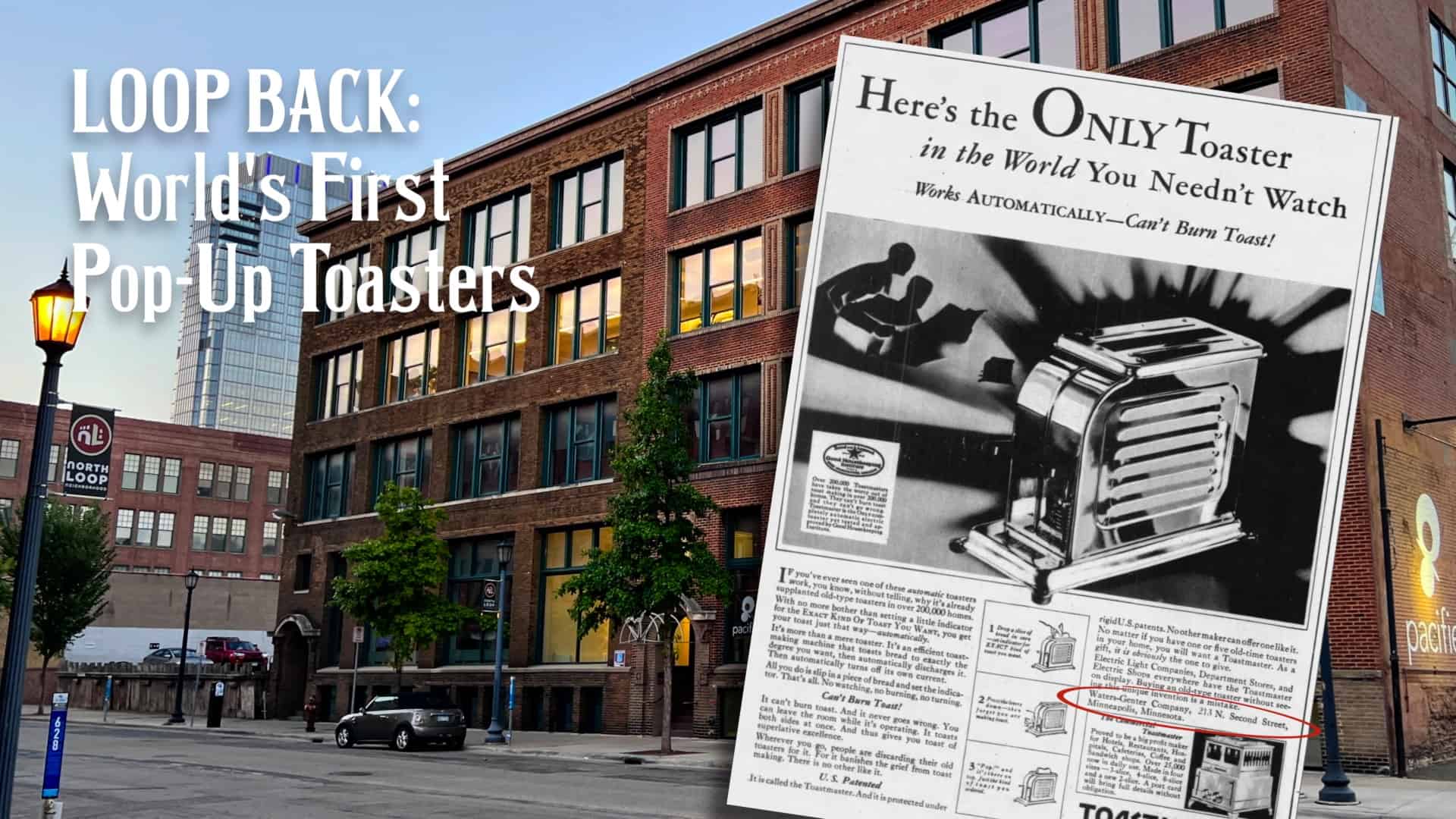
Loop Back: World’s First Pop-Up Toaster
Frustrated that his workplace cafeteria in Stillwater kept serving him burned toast because the staff had been distracted and let the bread heat too long, Charles Strite went to work on a solution in 1919, inventing a new toast-making appliance that wouldn’t have to be watched by anyone. The device would not only warm the bread on both sides at the same time, it would automatically turn off the heat and eject the toast when it was ready.
He called his revolutionary invention the “Toastmaster,” and it was first produced in the North Loop.
With his patent awarded in 1921, Strite teamed up with two Twin Cities investors, Glen Waters and Harold Genter, to start producing the Toastmasters specifically for restaurants, hotels and coffee shops. These early versions toasted as many as eight slices at a time.
The company’s first production facility was on North 2nd Street near Hennepin in a building that no longer exists.
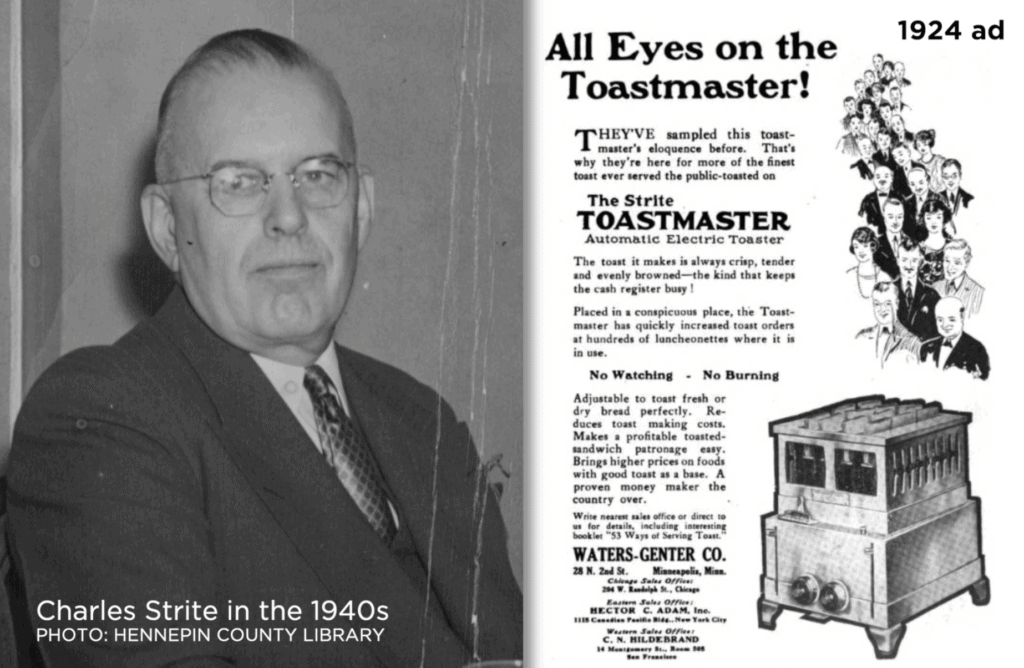
But by the time they introduced the consumer version of their Toastmasters in 1926, their factory was operating in the top two floors of 213-219 2nd Street North.
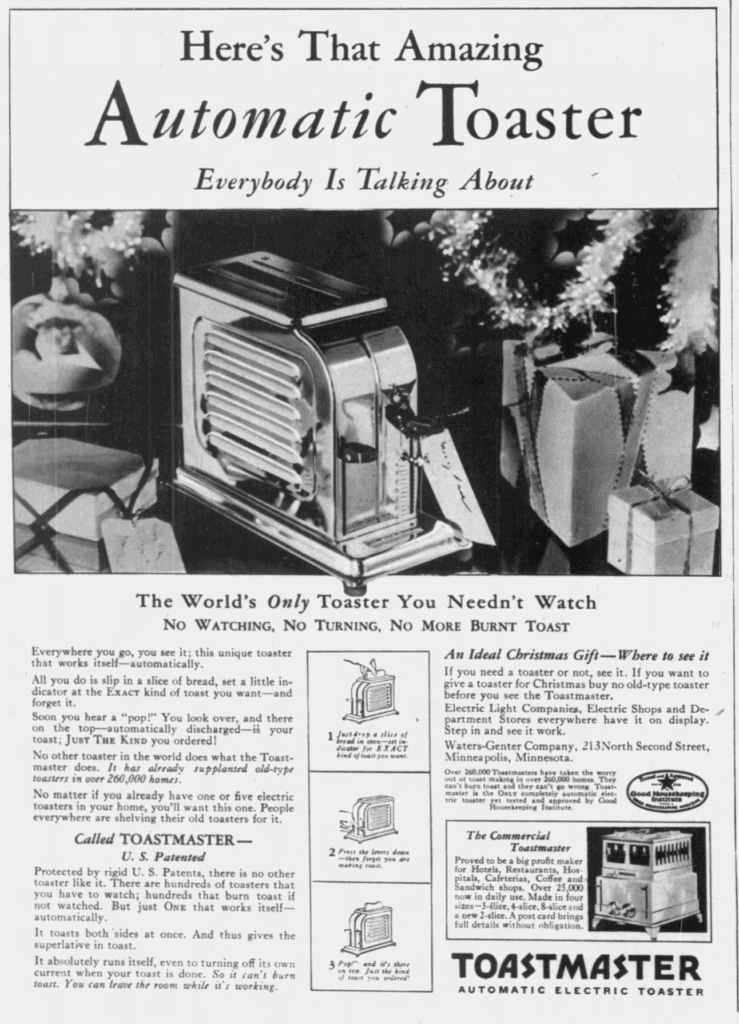
The new home appliances toasted one piece of bread at a time, with adjustable settings that allowed the user to determine how dark they wanted the toast to be. Ads at the time proclaimed, “Your eyes will pop out when the toast pops up. Such toast!”
Production, at first, was limited until Iowa businessman Max McGraw invested heavily in the Waters-Genter company, allowing them to scale the operations. McGraw would eventually buy the company.
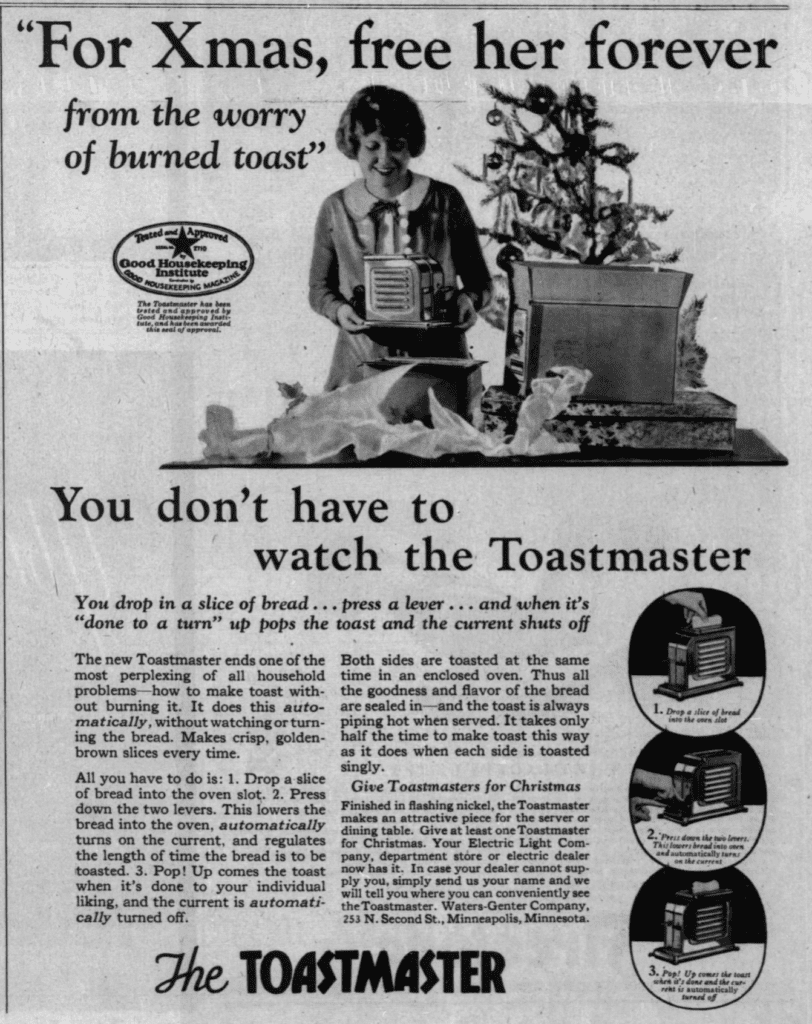
1927 newspaper ad
Sales of the new home appliances soared, even through the Great Depression. By 1930, more than a million toasters were being sold each year. In 1933, Waters told the Minneapolis Star that the toaster factory on 2nd Street was operating 24 hours a day, with four six-hour shifts.
McGraw’s company, McGraw Electric, moved the Toastmaster operations to Illinois in 1938.
The facility they used in the North Loop was shared with the Northwestern Glass Company, the company that built the building for its own warehouse space on the lower floors. And in the 1950s, the Bureau of Engraving manufactured electronic circuit boards there. We have their stories here in an earlier post.
Please visit the Historic North Loop section of this website for many more fun photos and articles about our neighborhood’s history.
By Mike Binkley, North Loop volunteer*
(*not an actual historian; I just pulled together information from newspaper archives, public records, online searches and most helpfully, the digital archives at the Hennepin County Library)
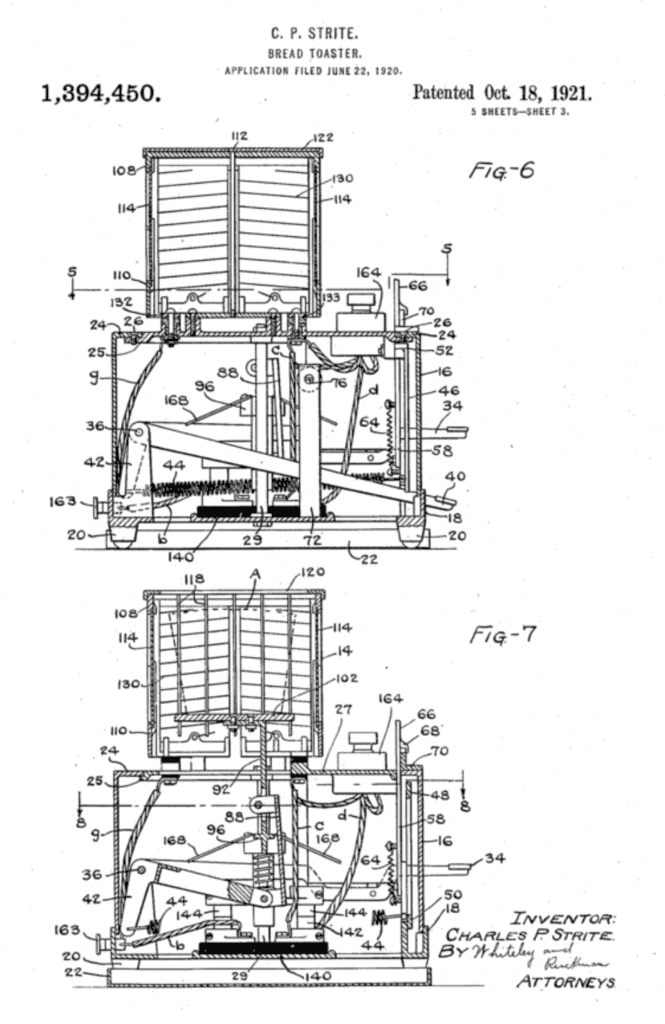
1921 patent for consumer toaster
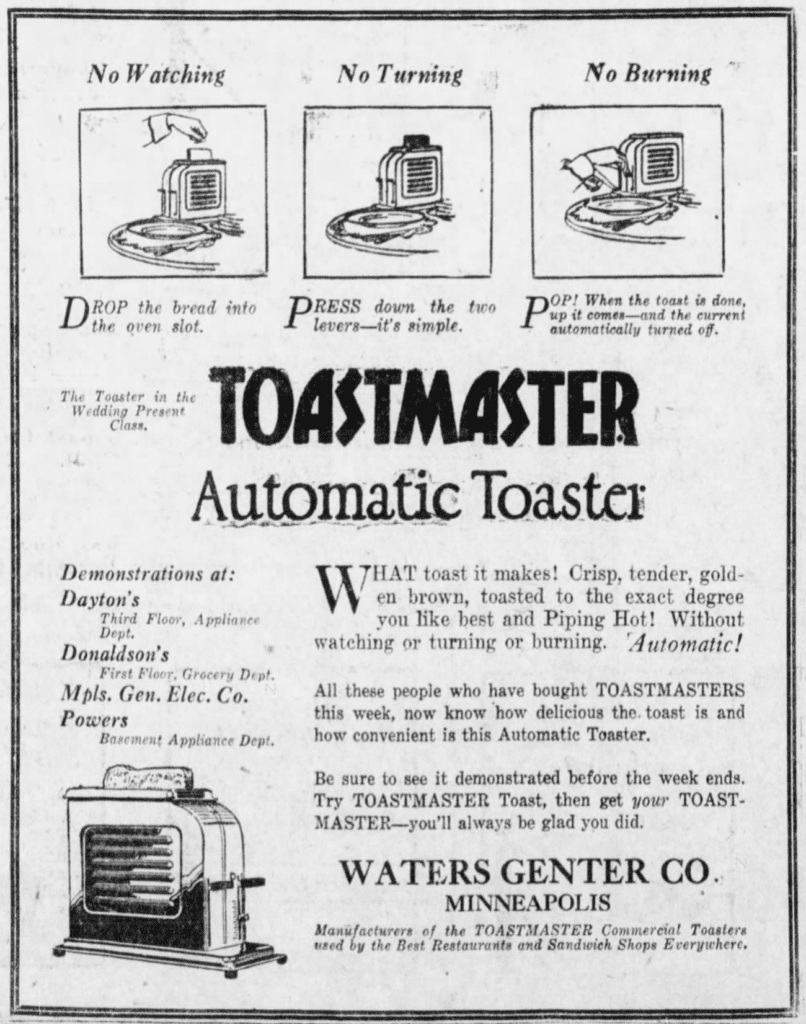
1926 ad

